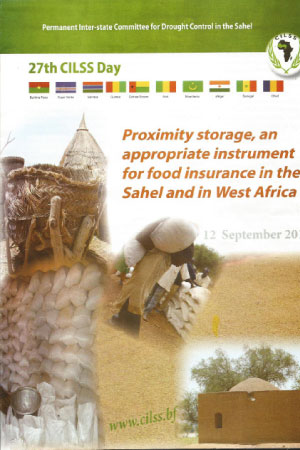
Established on 13th September 1973, CILSS mandate is to devote efforts towards achieving food security and combating the effects of drought and desertification for a new ecological balance in the Sahel.
To commemorate this important event, CILSS celebrates annually, the anniversary of its creation, on 12th September.
To that end, relevant a theme has been chosen, in connection with the CILSS mandate, the major concerns of its Member States and major topical issue worldwide or within the Sahel sub-region.
The theme for this year’s anniversary is “Community-based food storage: a suitable tool for food security in the Sahel and in West Africa.”
Almost every year, the Sahel region faces a situation where surplus and deficit areas coexist both within the countries and regionally. Climate changes will likely exacerbate this trend, with a rainy season that can be extremely heterogeneous depending on the area.
In the Sahel, several times in recent years, growing season, which were marked by satisfactory levels of cereal production, have however experienced serious tensions in terms of prices.
This has often made cereal accessibility more difficult for urban households and rural households in deficit. Thus, in some Sahelian countries, huge increases in cereal prices, at times with unprecedented levels, have been observed even in a context of a year of relatively abundant crop production.
Indeed, and despite production levels apparently good or very good, cereal prices have reached very high peaks, comparable to price dynamics observed in years of scarcity. Obviously and as a rule, cereal production whose level of domestic supply also depends on agro-climate conditions is the basic element that largely determines the level from which prices will start rising in the new marketing year.
But, in a liberalized market, the formation of cereal prices and their evolution over time are also the result of a combination of more or less important factors: the behavior and strategies of the different groups of actors; production levels over several marketing seasons; production and market dynamics in neighbouring countries etc. All these contribute to amplify or mitigate the usual price trends in a good or poor season.




